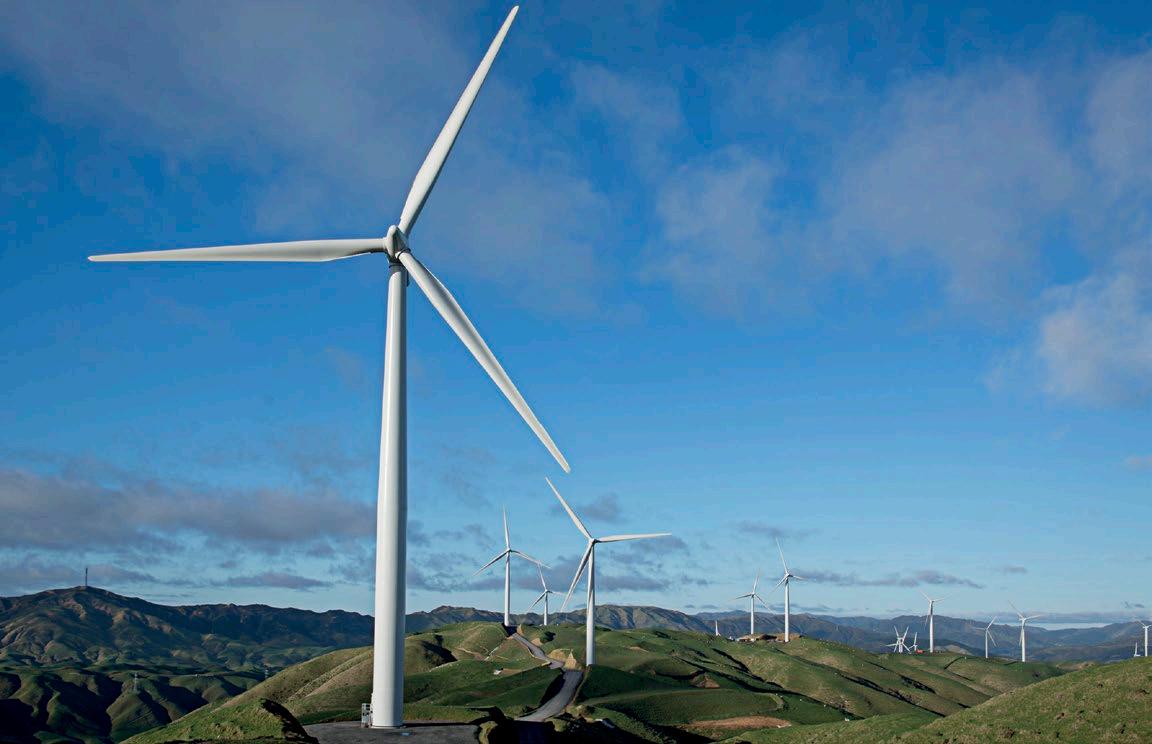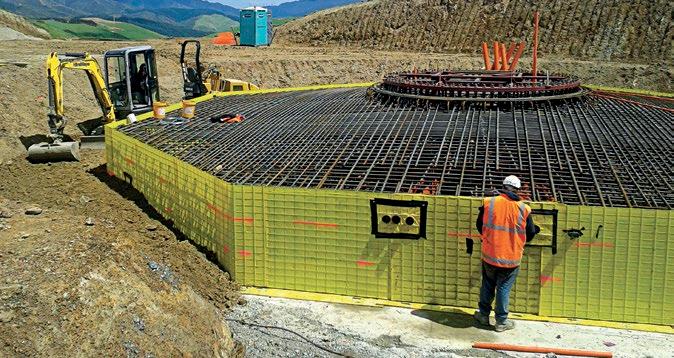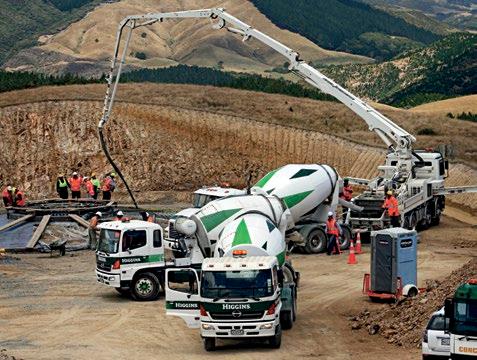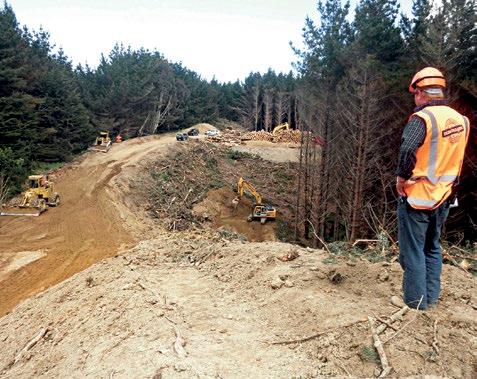
3 minute read
Higgins Contractors
A bluster of a build
in Ohariu Valley
Advertisement
Scenically located about a 30-minute drive northwest of Wellington’s CBD, the majestic views from the Mill Creek Wind Farm Project are almost as spectacular as the engineering accomplishments that underpin the project.
CATEGORY 4
PROJECT: Mill Creek Wind Farm, Wellington CONTRACTOR: Higgins Contractors T he Mill Creek Wind Farm Project was one that had been in development over many years, with Meridian’s final resource consent only being granted in August 2011.
In June the following year Meridian Energy awarded Higgins Contractors the contract for the civil works component.
Despite the many restrictive consent conditions, the challenging ground conditions of the local Ohariu Valley, and a tight programme, Higgins handed over every portion of the project on time (all civil works construction were completed in October 2014).
The civil works for the contract were generally grouped into two distinct phases – external works, which included formation of an access road through the Spicer’s forest and widening of Ohariu Valley Road, and core site civil works, which involved the construction of the main 18 kilometre access road, a 16 metre-long single span bridge, a multi-plate arch structure, construction of 26 turbine foundations and laying electricity supply fibre optic communication cables.
This would be Higgins’ fourth involvement in wind farm developments and, at the time of construction in 2013/14, it was the largest civil construction project in the Greater Wellington region.




To give you a sense of scale, at the peak of work an average 10,000 litres of diesel were being used per day (with a maximum of 13,000 litres). It’s also estimated that over 800,000 cubic metres of earthworks were moved. A Higgins spokesperson says a lot of the complexity of the project stemmed from the geological conditions, which varied substantially throughout the site.
“Geotechnical information provided with the tender information did not fully represent the variability of materials that was encountered, nor did it allow us to fully appreciate how the materials would perform across the site,” he says.
“For example, the working teams came across large sections of unsuitable silty clay and highly erodible silty sands on the seaward ridges, which were prone to scour in some areas and affected the soil bearing capacity.
“We mitigated this risk by undercutting these areas by up to one metre and infilling using rock rip rap.
“These same geological conditions affected some of the turbine foundations. These areas required digging out and back filling with cement stabilised basecourse prior to constructing the base.
“The management team had to weigh up the risk between increased construction costs versus failure to achieve the completion dates. In the end the decision was made to meet the contractual completion dates.”
With working farms left, right and centre, allowing for business continuity was also a major concern for Higgins and various management plans had to be put in place.
“The wind farm was constructed through four separate hill country sheep and beef farms. At times the construction of access roads, the delivery of materials, and all the other elements that go into building a wind farm, conflicted with the day to day operations of the farms,” he says.
“In particular two important issues for the landowners were the installation of the permanent fencing and the location and finished quality of permanent waste sites.
“To manage risk we met frequently with the landowners to explain what was occurring and to seek their input. We also enabled our fencing subcontractor to deal directly with the farmers.”
Considering the extent of the project (total man hours exceeded 200,000), Higgins is also proud to report no lost time injuries and a total injury frequency rate of 5.8. This is largely attributable to the fact that the project management team recognised during the construction phase of the works that a step change was needed to address the number of near miss and medical treatment events which were occurring.
As a result of this, a dedicated health and safety manager was employed to work alongside the construction team. Subcontractor audits were also undertaken and Higgins worked alongside its suppliers to assist them to improve their overall level of compliance.
All in all it is an impressive project that, while largely hidden from Wellington’s urban area, has all the essentials of a perfect wind farm.
It also has a pretty neat view. l










